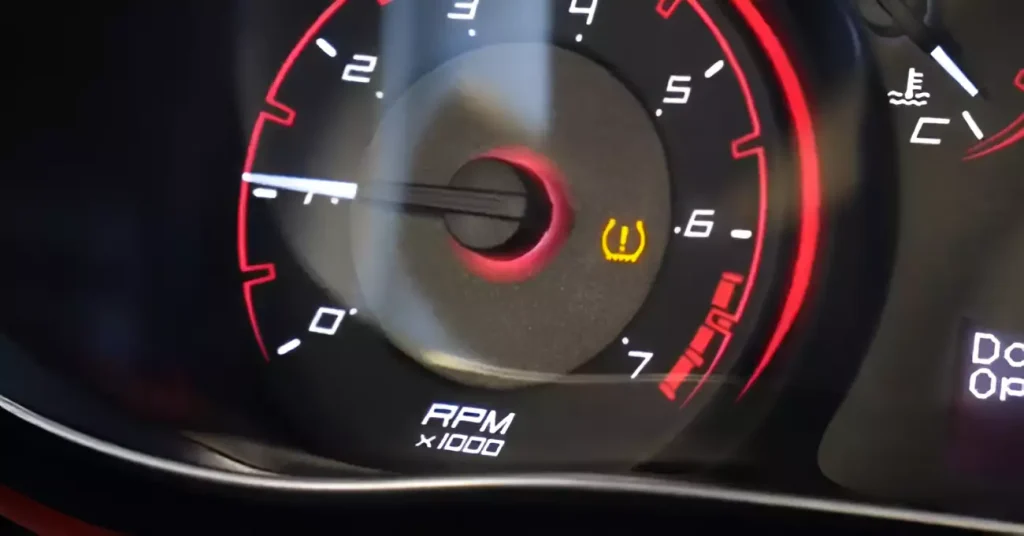You’re cruising down the highway, tunes cranked, and enjoying the open road when suddenly an annoying blinking light appears on your dashboard. Uh oh, the tire pressure light is flashing – that can’t be good. Before you freak out and pull over, take a deep breath. A blinking tire pressure light usually means one of your tires has low air pressure, but it could also indicate a sensor issue.
Either way, it’s best to get it checked out as soon as possible for your safety and to avoid costly damage. Not to worry, we’ve got you covered. In this article, we’ll explore the possible causes of the blinking light and walk you through how to troubleshoot like a pro. With a few simple tools and techniques, you’ll be back on the road in no time. Safe travels!
What Does a Blinking Tire Pressure Light Mean?
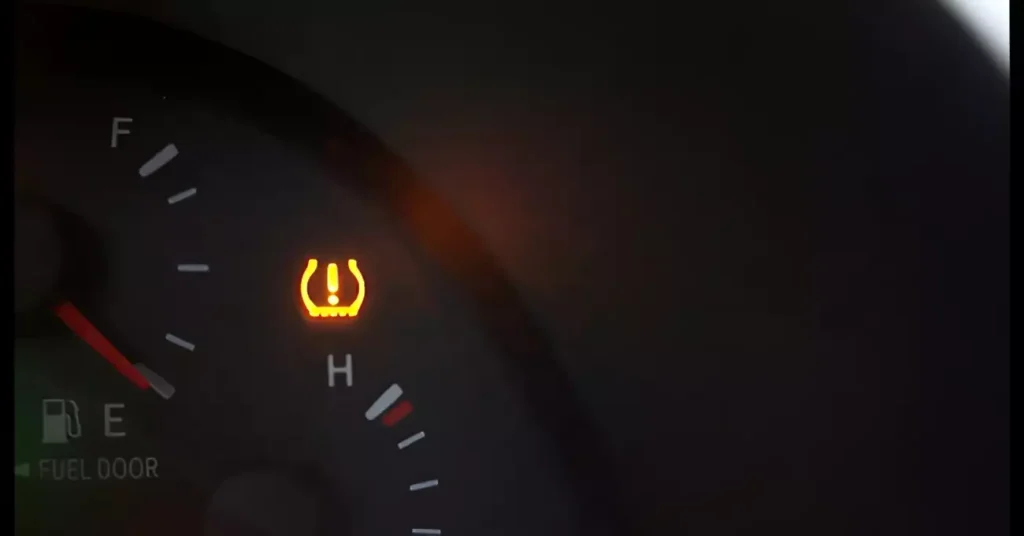
A blinking tire pressure light means one of your tires has low air pressure. This is an important warning sign you shouldn’t ignore. Low tire pressure reduces handling, braking, and fuel economy, and can lead to uneven tread wear.
What Causes Low Tire Pressure?
There are a few common reasons why your tire pressure light may blink:
- Natural air loss: Tires naturally lose 1-2 PSI per month. If it’s been a while since you’ve checked your tire pressure, they may have dropped below the recommended level.
- Temperature changes: Tire pressure decreases by about 1 PSI for every 10°F drop in temperature. Colder weather can trigger your tire pressure light to come on.
- Punctured tire: If you ran over something sharp, it may have punctured or damaged your tire, causing air to leak out. You’ll want to inspect your tires for any visible holes, slices, or embedded objects.
- Faulty tire pressure sensor: If your tires seem properly inflated, the problem could be a malfunctioning tire pressure sensor. These battery-powered sensors can fail over time. Have the sensors tested to determine if replacement is needed?
- Other leaks: Air can also leak from loose or damaged valve stems, wheel rims, or tire bead seals. Have a mechanic fully inspect your wheels and tires to locate and repair any leaks.
How to Fix a Blinking Tire Pressure Light
The solution is simply to inflate your tires to the recommended pressure listed in your owner’s manual or on the placard located in the driver’s side door jamb or fuel door.
- Check your tire pressure with a quality gage. Add air to any under-inflated tires.
- Drive your vehicle for at least 15 minutes to allow the tire pressure monitoring system to reset.
- Recheck your tire pressure to ensure it’s still at the proper level. The light should turn off once the system has reset.
If the light comes back on, it’s best to have the system checked by a mechanic to diagnose and repair the underlying problem. Safe driving!
5 Common Causes of a Blinking Tire Pressure Light
A blinking tire pressure light means one of your tires has low air pressure, which can reduce handling, braking, and fuel economy. Don’t ignore this warning – it’s best to inflate your tires to the proper pressure as soon as possible for safety and to avoid damage.
1. Low Tire Pressure
The most common reason for the tire pressure light to blink is simply low air pressure in one or more tires. As tires lose air over time through normal seepage, the pressure can drop below the recommended level. Use an accurate tire pressure gage to check each tire and inflate to the manufacturer’s recommended PSI, which you’ll find in the owner’s manual or on a label located on the driver’s side door jamb or fuel door.
2. Faulty Tire Pressure Sensor
The tire pressure monitoring system uses sensors to detect when tire pressure is low. If one of these sensors malfunctions or loses battery power, it may trigger the warning light. This can often be diagnosed and repaired by a mechanic with the proper scan tool. They can also test the sensors to determine if replacement is needed.
3. Damaged Wheel Well
Impact damage to the wheel well from hitting a pothole or curb can potentially damage the tire pressure sensor. Have the wheel well area inspected for any signs of damage that could be causing issues with the sensor. Repairs or replacement of damaged parts may be required to fix the problem and turn off the warning light.
4. Software Glitch
In some cases, a software glitch or coding error may cause the tire pressure monitoring system to malfunction, illuminating the warning light when there’s nothing actually wrong with the tires or sensors. A diagnostic scan of the system can typically detect and repair these issues by reprogramming or updating the software.
5. Faulty Control Module
The tire pressure monitoring system uses an electronic control module to collect data from the sensors and trigger the warning light. If this control module is damaged or malfunctioning, it may cause erroneous warning lights. Replacement of the control module is often required to resolve problems of this nature.
How to Check Tire Pressure
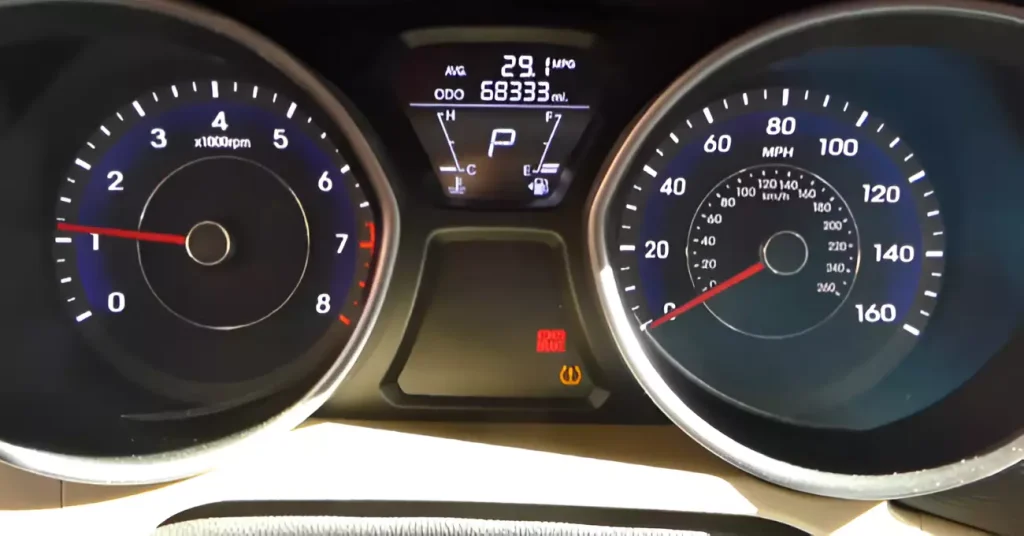
So the tire pressure light is blinking at you. Don’t panic! This typically means one of your tires has low air pressure, which can often be an easy fix. Here’s how to check your tire pressure like an expert and get that pesky light to turn off:
1. Locate the correct PSI levels
Check your owner’s manual or the sticker on the driver’s side door jamb for the recommended PSI levels for your front and rear tires. The PSI, or pounds per square inch, refers to the air pressure your tires need to be inflated to for safe driving and maximum performance. Having the right PSI in your tires not only turns off the warning light but also improves gas mileage, handling, and the life of your tires.
2. Get a reliable tire pressure gage
Invest in a high-quality dial or digital tire pressure gage. Inexpensive gages can be inaccurate and may provide false pressure readings. For the best results, choose a gage that can measure PSI in 1-pound increments.
3. Check the pressure in all tires
With the gage, check the air pressure in each of your four tires, including the spare. Note any tires that are underinflated according to your vehicle’s recommended PSI levels. Low or uneven tire pressure between tires can also trigger the warning light to turn on.
4. Add air to underinflated tires
Head to your local gas station or auto parts store and use the air pump to inflate any underinflated tires to the proper PSI. Double check each tire with your gage to ensure they are now at the recommended pressure levels.
5. Reset the TPMS
Once your tires are inflated correctly, you may need to reset your vehicle’s Tire Pressure Monitoring System (TPMS) to get the warning light to turn off. This can often be done by pressing a reset button in your vehicle or temporarily disconnecting and reconnecting the battery. Check your owner’s manual for specifics on how to reset the TPMS in your vehicle make and model.
Following these steps will have you solving the mystery behind the blinking tire pressure light in no time and ensure you have a safe set of properly inflated tires for all your travels. Let the expert in you handle this one!
How to Reset the Tire Pressure Light
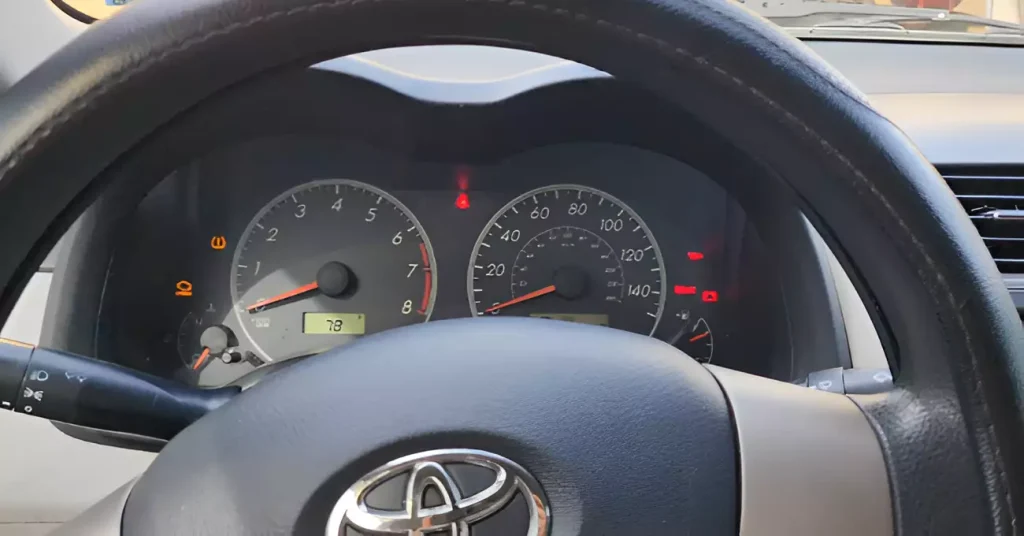
So the tire pressure light is blinking in your dashboard, huh? Don’t panic—this usually means one of your tires has dropped in pressure, but the good news is you can easily fix this yourself. First things first, you’ll need to determine which tire needs attention. The light should indicate which tire it is, if not you may need to check all four with a tire pressure gage. Once you find the culprit, here’s how to reset that pesky light.
Checking and Refilling the Low Tire
Park the car on a level surface and turn off the engine. Locate the valve stem on the wheel of the tire with low pressure—it will be the metal stem sticking out of the rim. Press your tire gage onto the valve and check the PSI. Compare it to the recommended pressure listed in the owner’s manual or on the placard located in the driver’s side door jamb or fuel door. Add air to the tire with an air compressor until it reaches the proper pressure.
Resetting the Light
With the low tire now inflated to the correct pressure, it’s time to reset the light. Get in the driver’s seat and turn the ignition to the “on” position, without starting the engine. Locate the tire pressure reset button, which is usually near the gage cluster. Press and hold the button until the blinking tire pressure light goes off. This may take up to 30 seconds. Once the light stops blinking, you can start the engine—the light should stay off, indicating the reset was successful. If it comes back on right away, you likely have another tire with low pressure—repeat the checking and refilling steps to resolve the issue.
Preventing Future Issues
To avoid the hassle of dealing with a blinking tire pressure light again, check your tire pressures at least once a month and always before long trips. Tire pressure naturally drops over time, and under-inflated tires reduce gas mileage, handling, and braking ability. An easy habit to get into is checking pressures when you stop for gas—just takes a couple minutes and will save you trouble down the road. If the light comes on frequently even with regular checks, you may have a small puncture or crack in a tire allowing air to escape. Have a mechanic inspect the tires to determine if any need to be repaired or replaced.
Staying on top of your tire care and knowing how to reset the pressure light will give you confidence behind the wheel and help ensure many safe and economical miles ahead! Let me know if you have any other questions about your vehicle.
How to Inflate Tires to the Proper Pressure
A blinking tire pressure light means one of your tires has low air pressure. Driving on underinflated tires is dangerous and reduces your vehicle’s handling, braking, and stability. It’s important to inflate your tires to the proper pressure as recommended in your owner’s manual or the tire placard located in the driver’s side door jamb or fuel door.
Check Your Tire Pressures
The only way to know if your tires need air is to check the pressure in each tire with a quality tire pressure gage. You can find these at most auto parts stores or gas stations. Pull the valve stem cap off each tire and place the gage over the stem. The gage will pop out the psi reading. Compare this to the recommended pressure in your owner’s manual for your front and rear tires.
- If the pressure is within 3 psi of the recommended amount, your tires are fine. Replace the valve stem caps.
- If the reading is more than 3 psi below the recommendation, you need to add air.
Add Air to Underinflated Tires
At a gas station, pull up to the air pump station. Unscrew the valve stem caps on the underinflated tires. Place the air hose over the valve stem and press the lever to begin inflating the tire. Check the pressure frequently with your gage as the tire fills. Release the lever when the gage reaches the recommended psi.
Repeat with any other underinflated tires. Replace the valve stem caps on all tires. The tire pressure light should go off once the tires have been properly inflated. If the light remains on, it may indicate a sensor issue and requires service. It’s best to have the vehicle checked to avoid unsafe driving conditions.
Proper tire pressure is key to safe driving, maximum handling and braking, and improved fuel economy. Make checking and inflating your tires to the recommended pressures a part of your regular vehicle maintenance routine. Your vehicle and your wallet will thank you!
What to Do if You Have a Slow Leak in Your Tire
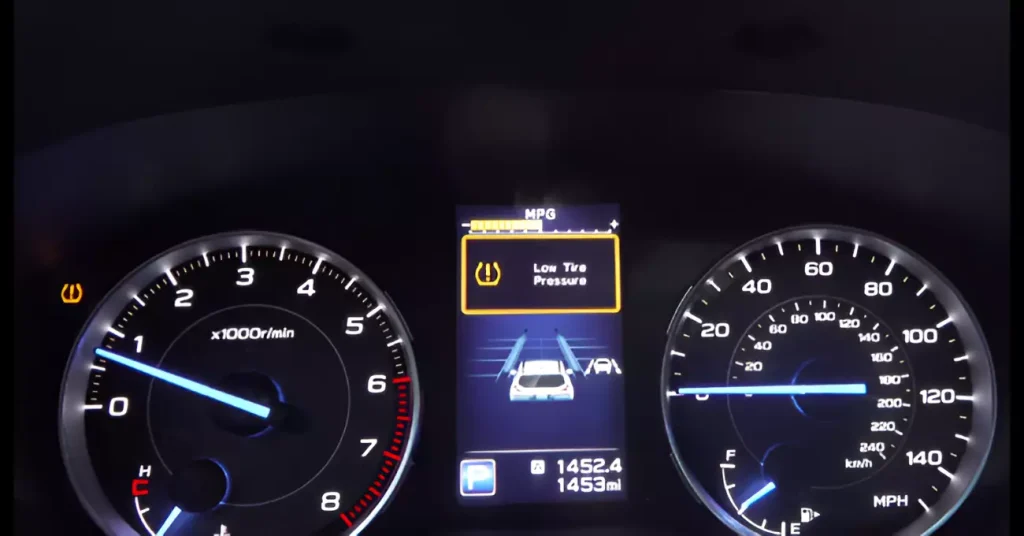
If you notice your tire pressure light blinking, it usually means you have a slow leak in one of your tires. A slow leak can be dangerous if left unaddressed, as it may eventually cause the tire to go flat while driving. It’s best to troubleshoot the issue as soon as possible.
To find the source of the leak, you’ll need to perform a visual inspection of all four tires. Look for any nails, screws or punctures in the tread or sidewall of each tire. Run your hand along the surface of each tire to feel for any holes or slits. Check the valve stems as well to make sure they’re screwed on tightly.
If you locate an obvious puncture, the next step is to determine if it’s repairable. Punctures smaller than 1/4 inch in diameter located in the tread area of the tire may be repairable. As a temporary solution, you can install a tire repair plug or patch to seal the hole. For larger punctures or holes in the sidewall, the tire will need to be replaced.
If you can’t find any visible punctures during your inspection, the leak may be too small to see with the naked eye. In this case, you’ll need to dunk test or pressurize test each tire to locate the source of the leak:
- Dunk testing involves submerging one tire at a time in water and looking for air bubbles. Mark the location of any leaks you find.
- For pressurize testing, inflate each tire to the maximum recommended PSI listed in your owner’s manual. Then run your hands along the surface of each tire to feel for any escaping air, which may feel like a small jet or spray. Mark any leaks you detect.
Once you’ve found the leak(s), you can determine if a patch or replacement tire(s) will be needed. It’s best to have the necessary repairs or replacements done as soon as possible to avoid driving on under-inflated tires. Your tire pressure light should turn off once the issue has been resolved and the correct tire pressure has been restored.
When to Replace Your Tires
It’s never a good sign when your tire pressure light starts blinking. This usually means one of your tires has dropped to a dangerously low pressure, which impacts safety, handling, and tire life. The blinking light is warning you that it’s time to check your tire pressure right away.
Low Tire Pressure
The most common cause of a blinking tire pressure light is simply low air pressure in one of your tires. Over time, tires can lose 1-2 PSI of pressure per month through normal seepage. Low pressure reduces the tire’s ability to properly support the weight of your vehicle, which can lead to uneven tread wear, reduce handling and braking, and lower gas mileage. Using a quality tire pressure gage, check the PSI of all tires and inflate any underinflated tires to the recommended pressure listed in your owner’s manual or on the placard located in the driver’s side door jamb or fuel door.
Faulty Tire Pressure Sensor
If all your tires seem to be inflated properly but the light is still blinking, you may have a faulty tire pressure sensor. These sensors are installed in the valve stem of each wheel and monitor tire pressure. Over time, they can malfunction or become damaged. Replacing a tire pressure sensor typically costs between $50 to $200 per sensor. It’s best to have the sensors diagnosed and replaced by a mechanic to ensure the correct parts are installed and the light is properly reset.
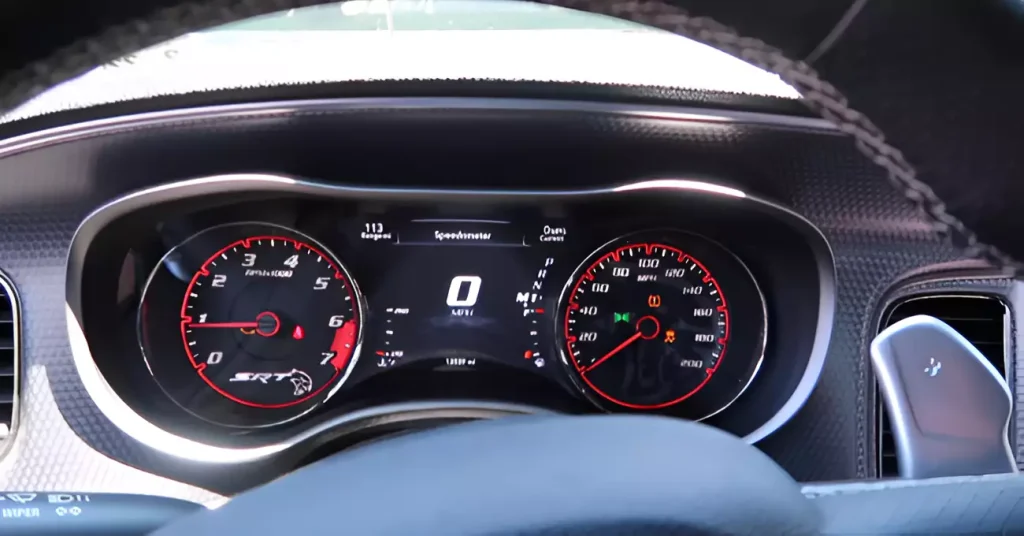
Replace Your Tires
In some cases, a blinking tire pressure light can also indicate it’s time to replace your tires. As tires age and wear down, they become more prone to losing pressure. Most tire manufacturers recommend replacing tires every six years regardless of tread wear. Older tires are more susceptible to punctures, cracks, and other damage that can lead to pressure loss. If your tires are nearing the end of their lifespan, it’s best to replace them for safety and to avoid the hassle of frequent pressure checks and sensor issues.
To avoid a blinking tire pressure light in the future, check your tire pressure at least once a month using a quality pressure gage. Maintaining proper pressure in your tires at all times will maximize their life, handling, safety and your fuel economy. Staying on top of routine tire care and maintenance is the best way keep your tire pressure light off and your journeys safe.
Blinking Tire Pressure Light FAQs: Get Answers to Your Questions
A blinking tire pressure light usually means one of your tires has low air pressure. But don’t panic! With a few simple steps, you can determine the cause of the warning light and get back on the road safely.
Why is My Tire Pressure Light Blinking?
There are a few reasons your tire pressure monitoring system (TPMS) light may be blinking:
- Low tire pressure: The most common reason is simply low air pressure in one or more tires. As tires lose pressure over time, the light comes on to alert you.
- Faulty sensor: The TPMS sensors monitor your tire pressure. If a sensor is malfunctioning or has a low battery, it may trigger the warning light.
- Seasonal temperature changes: Tire pressure decreases in cold weather and increases in warm weather. The light may blink as the tires adjust to temperature changes.
- Driving on a spare tire: If you’ve recently put on your spare tire, the TPMS light will activate since the spare tire does not have a pressure sensor.
- TPMS reprogramming needed: If you’ve recently rotated your tires or changed or replaced tires, the TPMS sensor IDs need to be reprogrammed. Until then, the light will blink.
How Do I Fix It?
Here are the steps to troubleshoot and resolve a blinking tire pressure light:
- Check your tire pressures. Use a quality tire pressure gage to check the PSI in all four tires. Add air as needed to reach the recommended pressure listed in your owner’s manual or on the tire placard located in the driver’s side door jamb or fuel door.
- Drive for at least 15 minutes. This allows the TPMS sensors to reset. The light should turn off during driving or shortly after. If it does not, proceed to the next step.
- Check for faulty TPMS sensors. Have the sensors checked by a mechanic with a TPMS scan tool. Faulty sensors will need to be replaced.
- Reprogram the TPMS sensors. If you’ve recently rotated tires or had new tires installed, the TPMS sensor IDs may need to be reprogrammed to properly track positions. See your owner’s manual for reprogramming steps or have it done by a mechanic.
- Tighten or replace the gas cap. If your vehicle has a gas cap, ensure it’s tightened properly. A loose or faulty gas cap can sometimes trigger the TPMS light. Replace the gas cap if needed.
- See your mechanic. If the steps above do not resolve the blinking TPMS light, have the system checked by a certified mechanic as soon as possible. Driving on under-inflated tires is unsafe and can damage tires.
Conclusion
So there you have it. Now you know the possible reasons why that annoying tire pressure light keeps blinking at you. Don’t ignore it – get it checked out as soon as you can for your safety and your wallet’s sake. Once you determine the underlying cause, fixing it yourself is totally doable if you follow the steps. You’ve got this! Before you know it, that light will stop bugging you and you can get back to enjoying a smooth ride. Keep your tires inflated to the recommended PSI, get regular pressure checks, and you’ll be set for many more carefree miles down the road. Drive safe!

